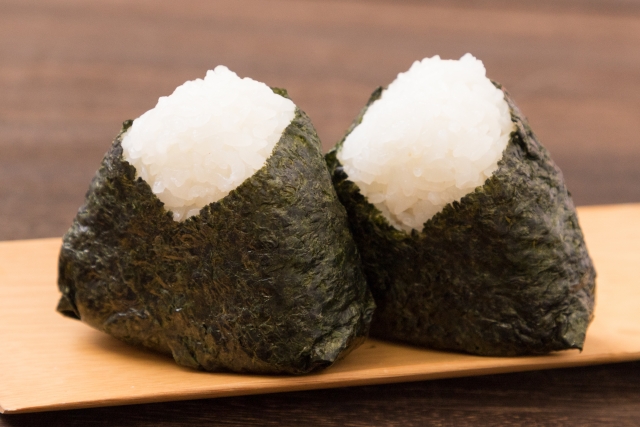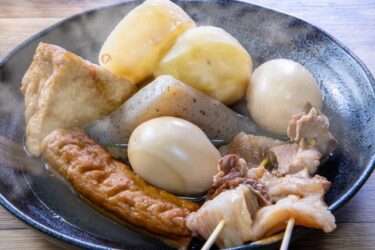Onigiri is a food made from rice, seaweed, and filling. It has been used as a simple portable food because it is convenient to carry and can be eaten without using chopsticks.
Nowadays, you can buy various kinds of Onigiris at convenience stores, and there are also Onigiri specialty stores.
There are also izakaya that serve Onigiris. The Onigiris sold at convenience stores have been carefully packaged to prevent the seaweed from getting wet.
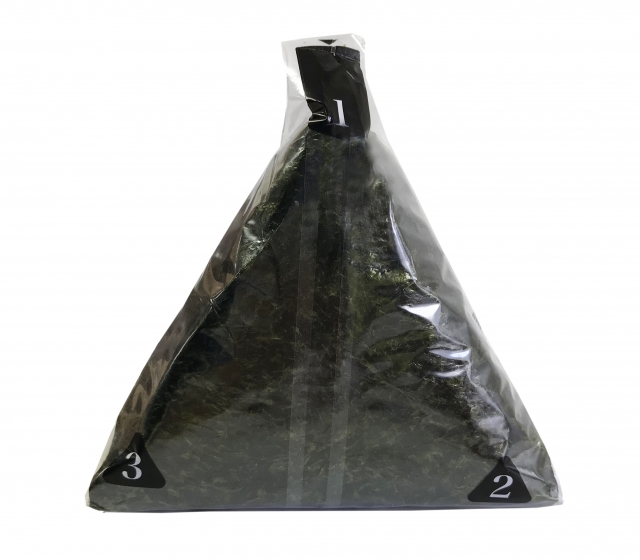
What is Onigiri and can I eat it?
Materials of Onigiri
Rice, seaweed, and fillings
| Gluten-free※ | Low-gluten※ | Wheat-free※ | Low FODMAPs | |
| Food supermarket | Convenience store |
Onigiri has a varaiety of filings
Onigiri is a food made by pressure-molding cooked rice into a triangle or bale shape.
The standard size is a size that can be molded by hands. Since it can be eaten without using chopsticks or tableware and can be stored at room temperature for about a day, it was mainly eaten as a portable food.
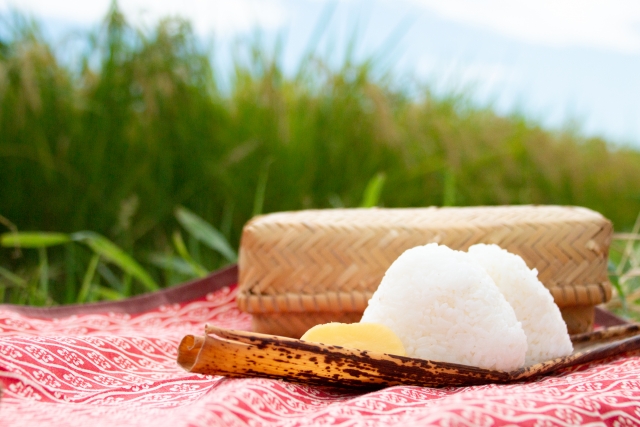
Fifty years ago, Onigiris were made at home, not in stores, but now we can buy them anywhere. In addition, the number of fillings has increased, making it one of the delicious dishes, not a carry-on meal.
The ingredients for Onigiris are cooked rice, seaweed, and fillings. When we make it at home, we usually use the rice we eat, but the Onigiris we sell use special rice that does not harden over time.
Nori (sea weed) is an indispensable item for Onigiris, but over time it absorbs the water from the rice and the texture deteriorates.
Therefore, the packaging of commercially available Onigiris is devised so that the rice and seaweed do not come into direct contact with each other.
And as for fillings, there are so many different kinds. I don’t think most people have dietary restrictions on rice and seaweed, but depending on the kinds of filling, some people may not be able to eat it.
Introducing the main fillings.
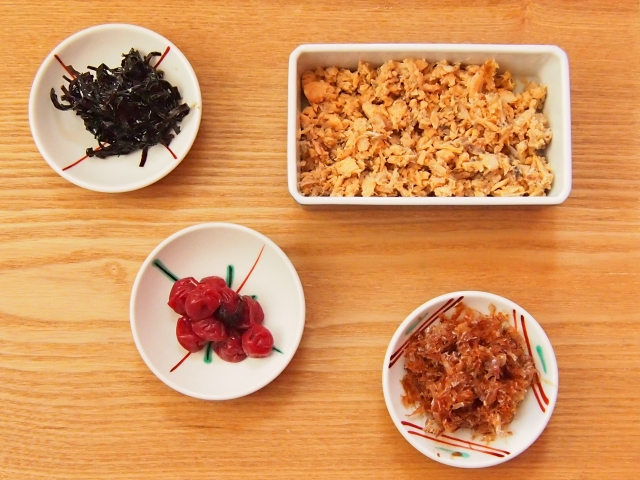
Umeboshi Salted plums with a strong acidity. The red color is the color of the leaves of a plant called shiso, which is used when pickling plum fruits. It is gluten-free and contains only vegetable ingredients.
Konbu Seaweed kelp is boiled sweet and spicy sauce in which soy sauce, mirin, salt, sugar, etc are mixed. The kelp has umami. Wheat ingredients are used in soy sauce. All are vegetable ingredients.
Sake Contains loosened salmon grilled with salt. It’s gluten-free, but it’s an animal ingredient.
Tarako Salted cod roe eggs, has a pink color. Some are raw and some are baked. It’s gluten-free, but it’s an animal ingredient.
Karashi mentaiko Cod roe egg is sprinkled with chili and salt and has a red color. Usually raw ones are used. It’s gluten-free, but it’s an animal ingredient.
Sea chicken mayonnaise “Sea chicken” is a can of tuna fillet. A mixture of tuna fillet and mayonnaise is a popular filling for Onigiris. It’s gluten-free, but it’s an animal ingredient.
Okaka or Katsuo Contains bonito fillet and bonito flakes boiled in soy sauce, sugar, mirin, etc. Not gluten free. It is also an animal derived material.
There are many other fillings as well.
Try to eat Onigiri!
How much ?
$ 0.8~2.3
Where can I get Onigiri ?
Convenience stores or food supermarkets
Food supermarkets sell products in the cheaper price range
Precautions when eating Onigiri
For gluten-free people
Some rice balls use soy sauce for filling. However, the amount of soy sauce used is small, and the protein contained in the raw material of soy sauce is decomposed during the brewing process, so there is no problem for people other than celiac disease. If you have celiac disease, please decide for yourself whether to eat.
For vegetarians
Some rice balls do not use animal ingredients. Specifically, they are ume (salted prum), konbu (kelp), and takana (leaf mustard).
Japanese writer’s comment for Onigiri
There are various types of Onigiris other than those already introduced. Here are some of the things you often see.
Yaki-onigiri (Grilled rice balls)
Rice balls without seaweed are baked in a frying pan with soy sauce on the surface. It has a fragrant scent. We sometimes see it on the menu of izakaya.

Gomoku-onigiri
Rice balls made from rice seasoned with soy sauce and boiled with meat or seafood, and other savory vegetables.
Chahan-nigiri
Rice balls made from Chinese food called Chahan, which is fried rice with meat and vegetables.
There are many other types of rice balls. Please look for it.

